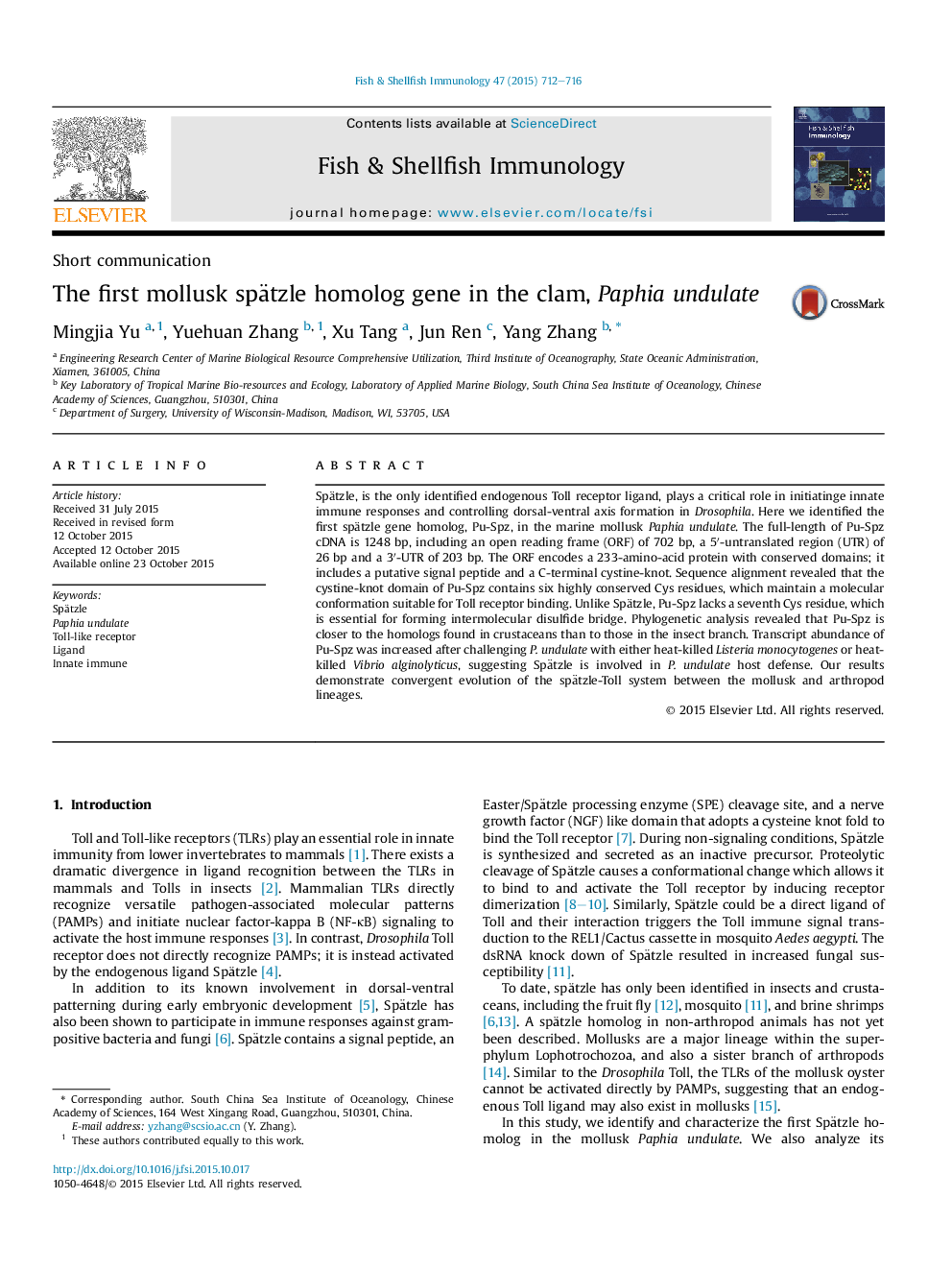| Article ID | Journal | Published Year | Pages | File Type |
|---|---|---|---|---|
| 2431029 | Fish & Shellfish Immunology | 2015 | 5 Pages |
•First spätzle homolog was identified in one marine mollusk, Paphia undulate.•Spätzle were involved in the host defense against both G+ and G− bacteria.•Spätzle-Toll system may convergent evolve in the lineage of mollusk and arthropod.
Spätzle, is the only identified endogenous Toll receptor ligand, plays a critical role in initiatinge innate immune responses and controlling dorsal-ventral axis formation in Drosophila. Here we identified the first spätzle gene homolog, Pu-Spz, in the marine mollusk Paphia undulate. The full-length of Pu-Spz cDNA is 1248 bp, including an open reading frame (ORF) of 702 bp, a 5′-untranslated region (UTR) of 26 bp and a 3′-UTR of 203 bp. The ORF encodes a 233-amino-acid protein with conserved domains; it includes a putative signal peptide and a C-terminal cystine-knot. Sequence alignment revealed that the cystine-knot domain of Pu-Spz contains six highly conserved Cys residues, which maintain a molecular conformation suitable for Toll receptor binding. Unlike Spätzle, Pu-Spz lacks a seventh Cys residue, which is essential for forming intermolecular disulfide bridge. Phylogenetic analysis revealed that Pu-Spz is closer to the homologs found in crustaceans than to those in the insect branch. Transcript abundance of Pu-Spz was increased after challenging P. undulate with either heat-killed Listeria monocytogenes or heat-killed Vibrio alginolyticus, suggesting Spätzle is involved in P. undulate host defense. Our results demonstrate convergent evolution of the spätzle-Toll system between the mollusk and arthropod lineages.
